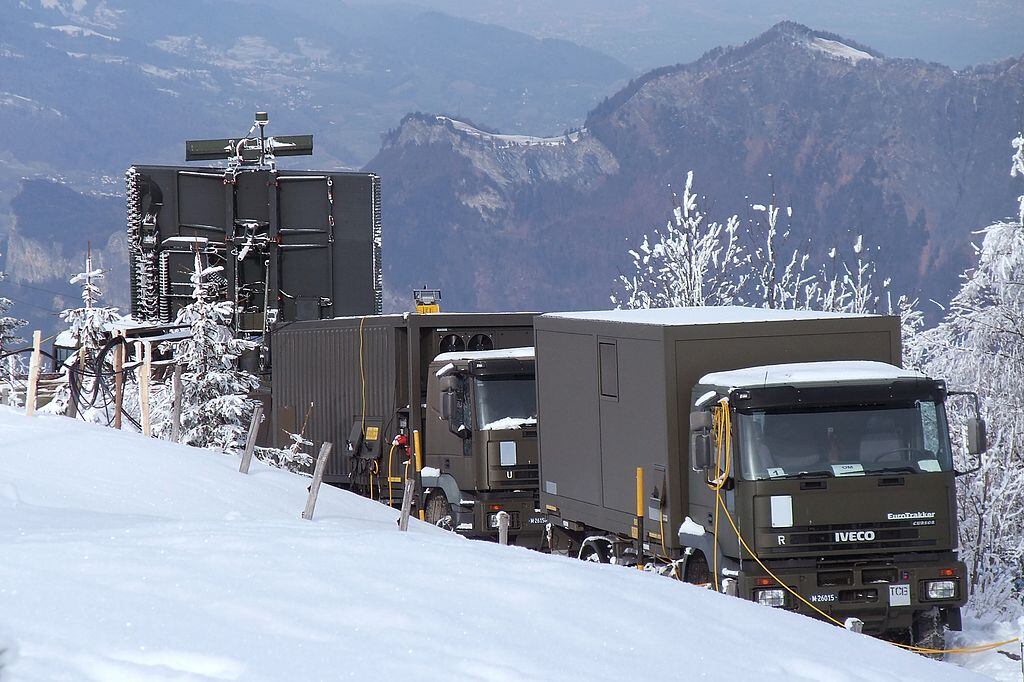COLOGNE, Germany — The German Air Force and electronics specialist Hensoldt are gearing up to deploy a new sensing technology in southern Germany that promises to target enemy aircraft without pilots knowing they are being tracked.
The company first unveiled its TwInvis passive radar system at the Berlin Air Show in April, where it was rumored as a technology with the potential to detect stealthy aircraft like the F-35.
The upcoming test in early November is part of what the German Air Force considers a “measuring campaign” to evaluate the technology, a service spokesman said. The Air Force expects to participate in the event with aircraft and personnel.
Passive radar systems rely on commercial airwaves to watch a given airspace. In a nutshell, the sensors can compute the positions of aerial objects based only on their reflections in the buzz of broadcast signals over populated areas.
The lack of a dedicated emitter against which reflections are tracked in traditional radar setups means the system cannot be detected by anti-radar weapons. At the same time, a key drawback for passive radars is that they must have sufficiently strong commercial broadcast activity in the targeted area to work at all.
Hensoldt officials told Defense News that interest from international customers in TwInvis has skyrocketed since engineers set up a large screen for Berlin airshow visitors to show tracks of nearby aircraft performing aerial maneuvers. (The U.S. Air Force did not let its two F-35 specimens at the show do flight demonstrations, leaving observers robbed of a chance to see what would actually happen in a match-up of fifth-generation stealth against passive sensing.)
RELATED

Bundeswehr officials have been working with Hensoldt on passive radar technology for several years as part of an initiative to probe an eventual acquisition by the Luftwaffe. According to the service spokesman, the technology could serve as a “gap filler” to augment the capabilities of air-surveillance systems, especially in covering low altitudes.
For the week-long test — company officials declined to give a precise date — Hensoldt will set up three passive radar receivers in the Munich area and one roughly 70 miles west, near the city of Ulm. The four sensors will allow air traffic tracking in a radius reaching north to Frankfurt in central Germany, but also include parts of Austria and Italy in the south and west, and parts of the Czech Republic in the northeast, according to the company.
“The sensors will see both the small Cessna at 500 feet, as well as the commercial airliner at 45,000 feet, or any Eurofighter in between,” Hensoldt passive radar chief Frank Bernhardt said in an interview.
RELATED

Hensoldt believes its engineers have pushed the technology to be accurate enough to guide anti-air missiles near their targets. Another key application is border surveillance in cases where a government operating the technology wants to appear inactive.
“If I can operate a sensor there and know what happens on the other side without my measurements being detectable, then that’s exactly the type of advantage that passive radar can bring,” said Bernhardt.
Company officials also have been speaking with Bundeswehr officials about the possibility of integrating a passive radar air picture into aircraft, or using it for maritime surveillance for the German navy, especially in the Baltic Sea, Bernhardt said.
South American governments facing wealthy narcotics cartels with radar defenses aboard their drug-running aircraft also have approached the company about the technology, Bernhardt added. “That is a use case that we didn’t see two years ago.”
Sebastian Sprenger is associate editor for Europe at Defense News, reporting on the state of the defense market in the region, and on U.S.-Europe cooperation and multi-national investments in defense and global security. Previously he served as managing editor for Defense News. He is based in Cologne, Germany.






